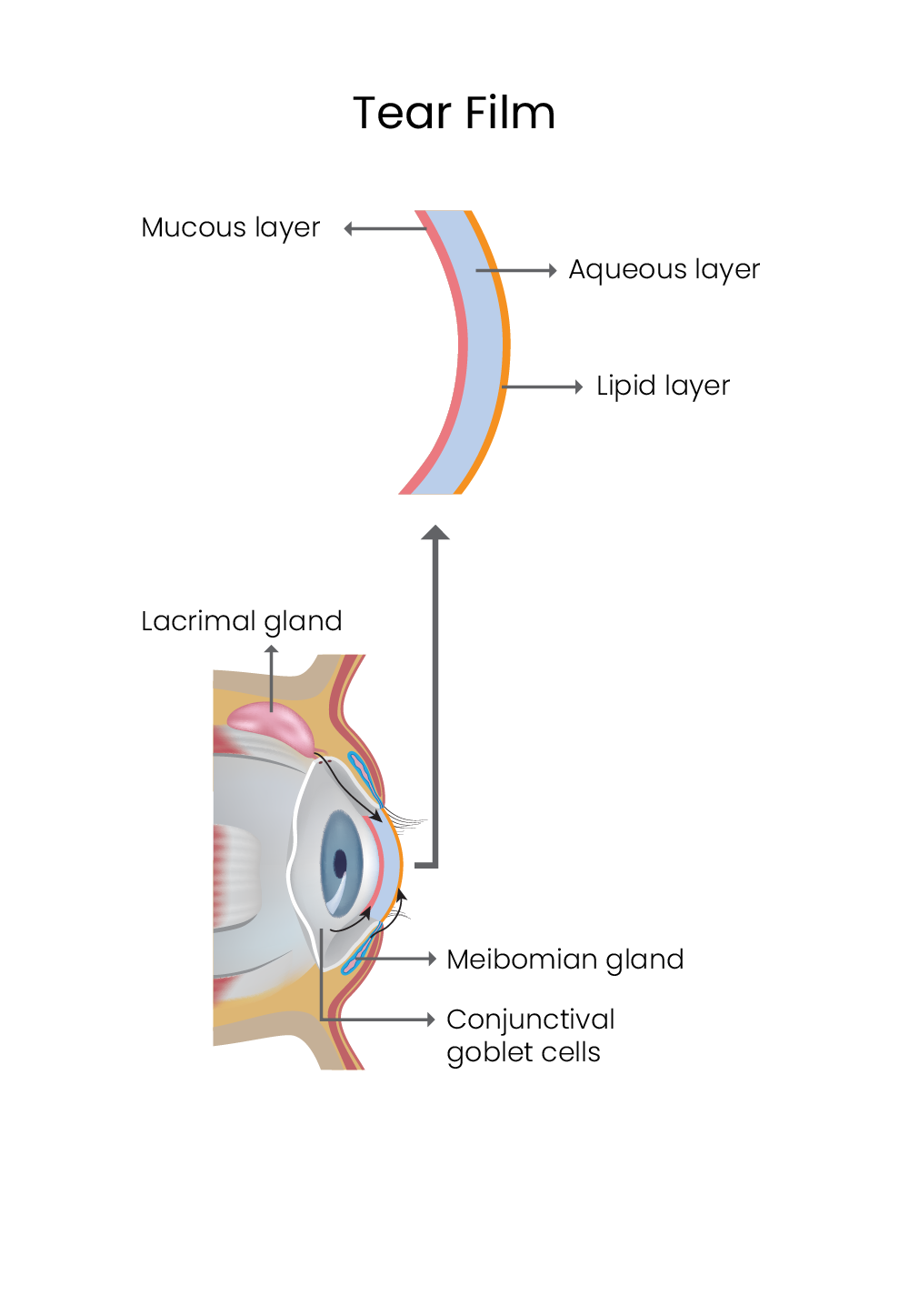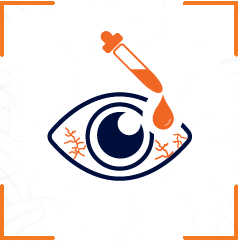What is dry eye syndrome?
Dry eye syndrome develops when your eye surface does not have sufficient moisture or lubrication. This moisture the tear film is a thick, stable fluid that is required to protect the eye.
Without enough tear film, your eyes can become dry and inflamed. In severe cases, this ongoing eye damage can lead to scarring and loss of vision.

What are symptoms of dry eye syndrome?
- Itch
- Aches
- Fatigue
Dry eye syndrome can be uncomfortable. Symptoms include itchy, burning or aching eye, as well as eye fatigue and heaviness, redness and blurred vision.
What causes dry eye syndrome?
Dry eye can result from tear glands secreting insufficient fluid, or the existing fluid evaporating too quickly. This can be due to age, hormones, some syndromes, computer use or other environmental factors.
How we diagnose dry eye syndrome
At the eye health centre, we offer a range of contemporary diagnostic and treatment options depending on your condition.
We will assess your dry eye syndrome using a range of eye tests and clinical signs.
This includes:
- Visual acuity evaluations to test vision
- Ocular surface integrity assessment to check your eye surface health
- Lacrimal secretion (schirmer test) to assess your eyes moisture production
- Keratograph 5 advanced corneal topography to monitor your tear gland function
- Tearlab to assess the tear biochemistry
How we help treat dry eye syndrome
Our eye health professionals can recommend an appropriate treatment for your dry eye condition, based on your circumstances. Treatment options can include:
Artificial Tears
This conventional, first-line treatment for mild dry eye cases comes in the form of drops, gel or ointment.
Medicated eye drops
Steroids or cyclosporine drops are used to treat underlying inflammation and increase tear production.
Punctal plugs
Small silicone or collagen implants inserted into the tear ducts can reduce drainage and improve symptoms.
Blephasteam
A medical device that heats the eyelids to unblock meibomian glands, improving the natural oily secretions of the eye.
BlephEx
A treatment to clean the eye and reduce the cause of inflammatory lid disease in cases of blepharitis.
Autologous Serum Tears
Eye drops manufactured from the patients own blood serum and plasma to treat severe dry eye cases requiring ocular surface restoration.
Intense Pulsed Light (IPL)
IPL (Intense Pulsed Light) eye treatment is a procedure that uses specific light energy to treat dry eye syndrome caused by Meibomian Gland Dysfunction (MGD).
Frequently Asked Questions
What are the risk factors for dry eye disease?
Factors that may increase the risk of getting dry eye disease include the following:
- Being over the age of 50
- Adult females are more likely to be at risk of developing dry eyes
- Experiencing hormonal changes due to pregnancy, menopause or the use of oral contraceptives
- Contact lens wear
- Use of medications that dry out the eyes – including antihistamines, decongestants, antidepressants
- History of certain systemic diseases – including diabetes, thyroid disease, autoimmune disease
- Prolonged use of computers and other digital devices
- Living in a dry, arid climate
- Smoking
How can I have dry eye disease if my eyes constantly water?
Oddly enough, excessive tearing and watery eyes can suggest dry eye. Excessive tears are the body’s way of compensating for extremely dry eyes. But because these tears do not contain the right balance of water, mucus and oil, they cannot properly lubricate the eyes.
Is it OK to use eye drops for dry eye every day?
You should use eye drops for dry eye exactly as directed by your doctor. Eye drops are not meant as a long-term cure for dry eye disease. They are usually a good solution to alleviate symptoms while your doctor determines the underlying reason for your condition.
Can I go blind from dry eye?
If chronic dry eye disease is left untreated, it can eventually damage the surface of your eye. Your cornea could develop abrasions, inflammation, ulcers or other complications that lead to further discomfort and even vision impairment.
Are there natural ways to minimize dry eye symptoms?
Our eye doctors may recommend you make the following behavioral and lifestyle changes:
- Stay hydrated by drinking plenty of water.
- Eat a balanced diet that includes foods containing omega-3 fatty acids (tuna, salmon, nuts, flaxseed).
- Take frequent breaks while using computers and other digital devices.
- Use a humidifier inside.
- Wear protective eyewear on windy days or when spending time in dry or dusty environments.
- Apply a warm, damp washcloth to your eyelids.
- Do not smoke.
- Switch from wearing contacts to wearing glasses.
- Avoid any air blowing directly into your eyes (including fans and car heaters and air conditioners).
What is the best treatment for dry eyes?
The best treatment for dry eye depends on the root cause of your individual case.
If your eyes make tears but they evaporate too quickly, Blephasteam or intense pulsed light (IPL) therapy may help. The Rexon eye device applies low-energy, high-frequency electrotherapy to clear obstructed meibomian glands contributing to evaporative dry eye. The device works quickly and painlessly, and treatment can be performed in our office.
If your eyes simply do not produce enough tears, medicated eye drops or punctal plugs may improve your condition.
We may also recommend autologous serum tears for the treatment of dry eyes as well as to help heal some corneal wounds or injuries.
Can dry eye disease be cured?
No. Although the symptoms can be well-managed by the dry eye specialists at our practice, dry eye disease is considered a chronic medical condition.
Do you have a question or concern about your eye health? To discuss your condition with an experienced ophthalmologist or optometrist, please contact The Eye Health Centre



